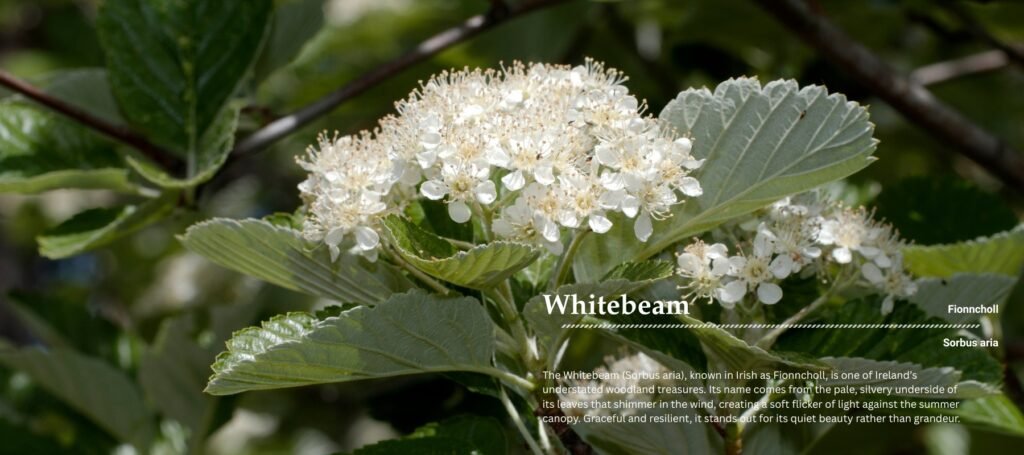A Tree of Seasonal Beauty
In spring, the Whitebeam bursts into clusters of creamy-white flowers that draw bees, hoverflies, and pollinators in abundance. These blossoms are a vital food source at a time when insects are reawakening after winter. As the seasons turn, the flowers give way to clusters of red berries that ripen in late summer and autumn.
These berries are a feast for birds such as thrushes and blackbirds, which help disperse the seeds across the countryside. Even as the leaves begin to fade, the berries remain, adding a warm splash of colour to hedgerows and woodlands through the shorter days of the year.
A Quiet Force for Biodiversity
Though not as well-known as the oak or ash, the Whitebeam plays an important ecological role. Its flowers provide early nectar for pollinators, its berries sustain birds through autumn, and its dense foliage offers reliable nesting cover. It also adapts easily to different soils, thriving where more sensitive species might struggle.
This versatility makes it a valuable tree for rewilding, urban planting, and coastal restoration. The Whitebeam works quietly but effectively to strengthen ecosystems, stabilise soil, and support the cycles of life that surround it.
A Heritage of Strength and Use
While the Whitebeam does not feature heavily in Irish mythology, it has long been valued for its fine-grained, durable wood. In earlier times, its pale timber was used for furniture, tool handles, and other practical crafts that required strength and precision. Its berries, though bitter to taste, were sometimes used in traditional preserves and country wines across Europe.
In this way, the Whitebeam represents a tree of subtle utility, beautiful to behold, dependable in function, and deeply connected to both people and place.
Planting a Legacy of Light and Balance
When you plant a Whitebeam with Grown Forest, you are contributing to a living cycle of beauty and support. Each tree planted provides food for pollinators, berries for birds, and shelter for countless small creatures. Over time, it becomes a steady companion in the rhythm of the seasons, silver in summer, red in autumn, and quietly enduring through winter.
The Whitebeam reminds us that the most meaningful change often happens quietly. Through steady growth and gentle resilience, it builds the foundation for a healthier, more balanced natural world.

